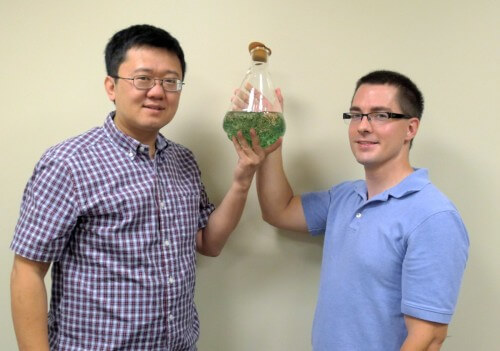One of the holy grails in the chemical sciences has long been the discovery of a selective reaction capable of converting the hydrogen atoms in complex natural substances into halogen atoms - this is in light of the fact that the carbon-halogen bond is one of the most stable chemical bonds among organic compounds.

[Translation by Dr. Nachmani Moshe]
One of the holy grails in the chemical sciences has long been the discovery of a selective reaction capable of converting the hydrogen atoms in complex natural substances into halogen atoms - this is in light of the fact that the carbon-halogen bond is one of the most stable chemical bonds among organic compounds.
Molecules containing carbon-halogen bonds occur naturally in all animal kingdoms and constitute a large group of natural substances with a wide range of biological activities. The presence of halogen substituents in many active compounds has a significant effect on their molecular properties.
One of the holy grails in the chemical sciences has long been the discovery of a selective reaction capable of converting the hydrogen atoms within complex natural substances into halogen atoms - this is in light of the fact that the carbon-halogen bond is one of the most stable chemical bonds among organic compounds. Until the scientific breakthrough uncovered in Xinyu Liu's lab at the University of Pittsburgh, there was no reliable synthetic or biological method for achieving this important conversion. In an article published in the scientific journal Nature Chemical Biology, the research group discovered the first enzyme capable of making this conversion.
The research team examined a specific bacterium and proved that a certain protein in it (WelO5) is the first enzyme ever capable of encouraging the selective conversion of an aliphatic bond (CH) to a carbon-halogen bond (C-Cl) in a small molecule. It is expected that this discovery will pave the way for unprecedented opportunities in the development of new catalysts for selective halogenation reactions at stable carbon atoms located within complex molecular structures.
The discovery could help a lot and lead to the development of diverse applications in the pharmaceutical and agricultural industries, and will allow scientists in the field of medicinal chemistry to build customized synthetic molecules with halogen atoms in specific positions, all in order to improve their biological activity.
